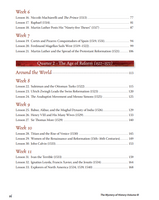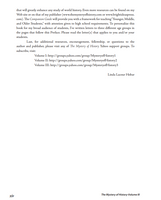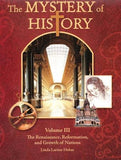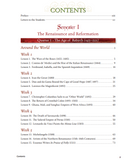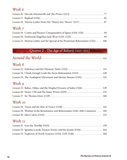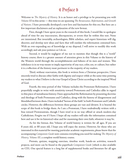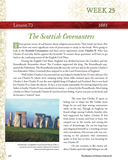9605
In the Words of the Author Covering people and events from 1455 to 1707, Volume III contains more than I imagined it would. The Medici’s, the Inquisition, and Christopher Columbus. Michelangelo, Martin Luther, and Henry VIII. Copernicus, Shakespeare, and Pocahontas. These are but glimpses of great power, great minds, and great passion. I’m in awe over each and every one of the geniuses that graced this rich time period. As is true with the other books in this series, The Mystery of History Volume III will look at what was going on all over the world in the order that it happened. So, while the Renaissance and Reformation were taking shape in Europe, we’ll look at the rise of wealthy empires in West Africa, the Mogul dynasty of India, and the peaceful lives of the Aboriginals of Australia. We will also visit Ivan the Terrible in Russia and the Tokugawa family in Japan. Of course the stories will be told of the master painters and sculptors who made the Renaissance famous, as well as the scientists and philosophers who dissected it. And the time period wouldn’t be complete without boarding a ship or two to circumnavigate the globe for spices and riches in the East. Many more explorers will touch the soil of North America and start a new chapter in the history of the world. We’ll bow with the Pilgrims who will give thanks for their survival and welcome the Native Americans to their feast. Student Reader Unlike Volumes I and II, Volume III has been separated by my publisher into two beautiful books! The Student Reader now contains 84 lessons in a colorful, easy to hold hardback. The reader is a stand-alone world history text for all ages to enjoy. But for those wanting a full study of the time period, you will want to consider The Mystery of History(Volume III) Companion Guide: Curriculum and Student Activities. This guide book (as a paperback, CD, or download) will contain these familiar and popular components of The Mystery of History series: Pretests; Hands-on/Research Activities for Younger, Middle, and Older Students; Memory Card ideas; bi-weekly quizzes and exercises; timeline helps; maps; supplemental book lists; and more. (Though it is recommended that Volumes I and II be studied prior to this volume, it is not necessary.)


